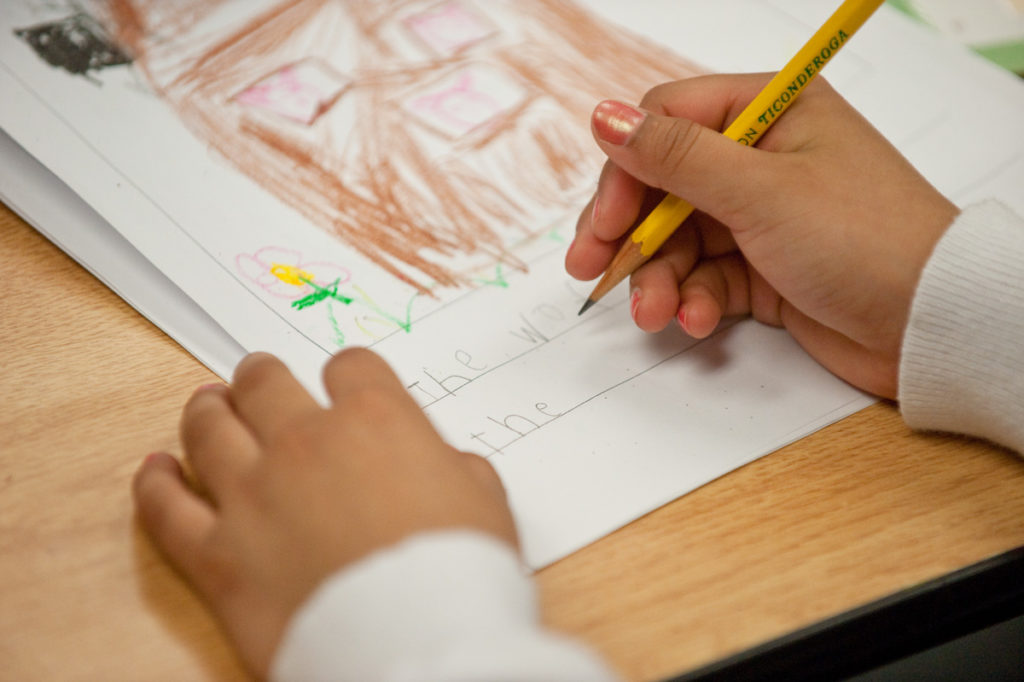
It’s getting to be the time of year when teachers’ efforts during the first weeks of school begin to pay off. With classroom routines becoming well-established, a blossoming sense of community, and teachers who’ve gotten to know the children they teach, school days begin to fall into a rhythm. Students are feeling settled in, engaged, and ready to take on new learning challenges.
It’s also the time of year when students who need extra support start to stand out. That was the case for a child I knew named Jake. Jake had autism and was nonverbal at the start of first grade, so we’d expected that routines might be a challenge for him. As it turned out, his strong processing skills and his teacher’s skillful use of Interactive Modeling to teach procedures, plus lots of proactive reminding, led to a successful first few weeks. However, as time went by, Jake’s classmates needed fewer and less detailed reminders about everyday classroom routines, and Jake started to falter. With a class of twenty-five students and no assistant, his teacher tried to be proactive when she could, but she wasn’t able to give Jake as much support as he needed.
Thankfully, at our school we had a great working group of adults who came together to think of other ways to assist Jake. The speech pathologist recommended social stories as a tool that might help Jake manage routines with less verbal direction. She explained that in social stories, each page pairs a picture of an action with a word or very short sentence describing it. These pages might be bound into a book or attached to a flip ring—or any format that makes it possible for the child to have the story at hand to review independently or read with an adult.
Jake’s teacher lit up when she heard this idea. She immediately rattled off a list of routines that she could make into social story books for Jake and started thinking about which to make first. To begin, Jake had a “starting the day” book, a “visiting the bathroom” book, a “lining up” book, a “walking in the hall” book, a “lunch line” book, a “making a choice at recess” book, and a “going home” book. These social stories followed the same steps she had shown during Interactive Modeling for each routine. To make them more meaningful, she used photos of Jake doing each of the steps for the illustrations. She put the books in a large zipper-top bag that stayed with Jake, and during the school day, when a routine was coming up, she’d pull out the appropriate book for Jake to review.
I still remember the thrill of hearing her describe how much having the social story books seemed to help Jake with classroom routines. She also noted that during self-selected reading time, Jake was choosing to read his social stories! (On a side note, later in the year, another beautiful thing happened related to this. The speech therapist used the books as she worked with Jake in his language development. As his verbal abilities emerged, some of the first words he uttered out loud were the steps to lining up that he’d learned from his book.)
The benefits of offering this extra support to Jake extended beyond him to encompass his classmates—and ultimately our whole school. In the classroom, as children showed an interest in Jake’s books, their teacher was inspired to take photos of students doing other routines and used them to make a classroom collection of social story books. Her description of that sparked a wonderful discussion among colleagues, which blossomed into a display of photos of students completing routines used in common areas of our school, such as the cafeteria and the playground.
So who is your Jake this year? What strategies can you use to support him or her? If the challenge involves remembering routines, perhaps social stories will help. Or, if managing transitions seems to be the issue, could you use a personalized schedule chart like the one Candace Roberts described making for a child in her class?
Karen Poplawski is the chief program officer for the Responsive Classroom approach and author of the fourth edition of The Morning Meeting Book.